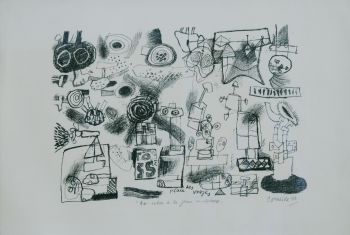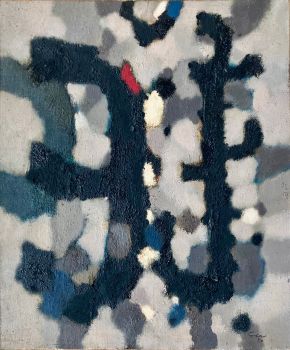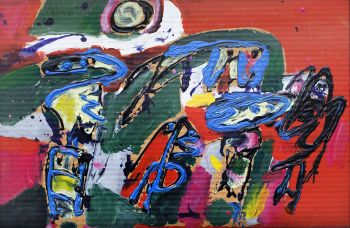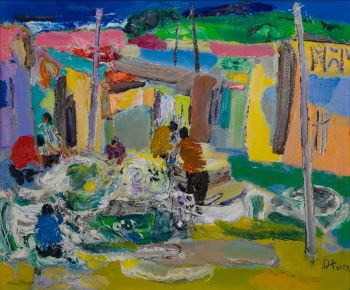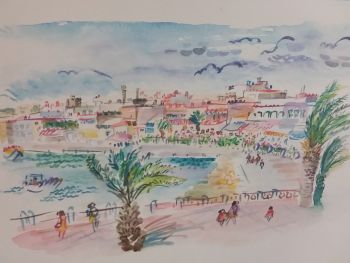Zonder titel 1950
Dora Tuynman
Original oil on canvas
38 ⨯ 46 cm
ConditionRestored
Price on request
Bert Kuipers Kunsthandel
- About the artworkTuynman, Dora; Montpellier 1926 – 1979 Deventer
Titel: Zonder titel, olie op doek ca.1950
38 x 46 cm, gesigneerd r.o. D.Tuynman
Herkomst: particuliere collectie Nederland
Literatuur: Erik Slagter, ‘Dora Tuynman 1926 – 1979’, Uitgeverij De drijvende dobber, 1991, zie voor een vergelijkbaar schilderij uit 1950 blz. 18 - About the artist
Dora Tuynman did not receive the recognition that her friends and fellow painters such as Appel and Corneille did in the flow of the Cobra movement.
In the rue Santeuil in Paris, in an environment dominated by men, she managed to realize her future ideal: to be a painter. This led to a production of paintings that express a power that, now that time has passed, can be viewed with amazement.
Dora Tuynman was born in 1926 in Montpellier, southern France. A few years after high school, there appears to be only one path for her: becoming a painter. In the winter of 1951-'52, Dora Tuynman, who had been living and working in Paris since 1949, was given a large work space in the factory building intended for demolition, where Karel Appel, Corneille and others had also moved in on the ground floor. The museum directors and other interested parties mainly visited the ground floor and exceptionally the first floor where Bram Bogart and Dora Tuynman had their studio.
After 1954, the future begins to take on a more optimistic picture for Tuynman. She receives a study grant from the French government, which allowed her to devote an entire year to her art. After an exhibition at the club des Quatre Vents, where she sold many works, it seems as if she has achieved success.
The paintings she made after 1957/58 are exceptionally powerful in structure, color and paint application. Nothing remains of the decorative static color pattern, on the contrary, a fe expressionistic use of color takes its place.
After 1959, her paintings become more chaotic with the crisscrossing strokes in the unclear shapes. In 1961-62, Dora went to New York, where she stayed for nine months. There she paints large, vital canvases, of which the art critic Raoul Jean Moulin says: "What was rooted is now blossoming; what was dormant is now being released like a fountain." The colors become 'the brutal expression of a natural joy', after which a comparison follows with Bartok's music.
In 1963, Tuynman exhibited in 't Venster in Rotterdam, where sales failed. During this period she expresses her talent in a powerful way. A new phase follows in her life and in her art. Her labor becomes limited and irregular. Painting becomes less impulsive. A trip to Israel follows in 1970. After her return she lacks the strength and inspiration for renewal. The dolls, a theme that has been present in her work since 1958, are given more distorted facial features. This work has a heartbreaking drama and an oppressive atmosphere.
Tuynman increasingly suffers from severe depression. On July 11, 1979, this combative artist's life came to an end. It is remarkable that success did not materialize for her when she made her best paintings.
Are you interested in buying this artwork?
Artwork details
Related artworks
- 1 - 1 / 1
- 1 - 4 / 24
- 1 - 4 / 24
 Gecureerd door
Gecureerd doorDanny Bree
1 - 4 / 24- 1 - 4 / 24
- 1 - 4 / 12













